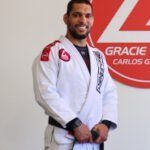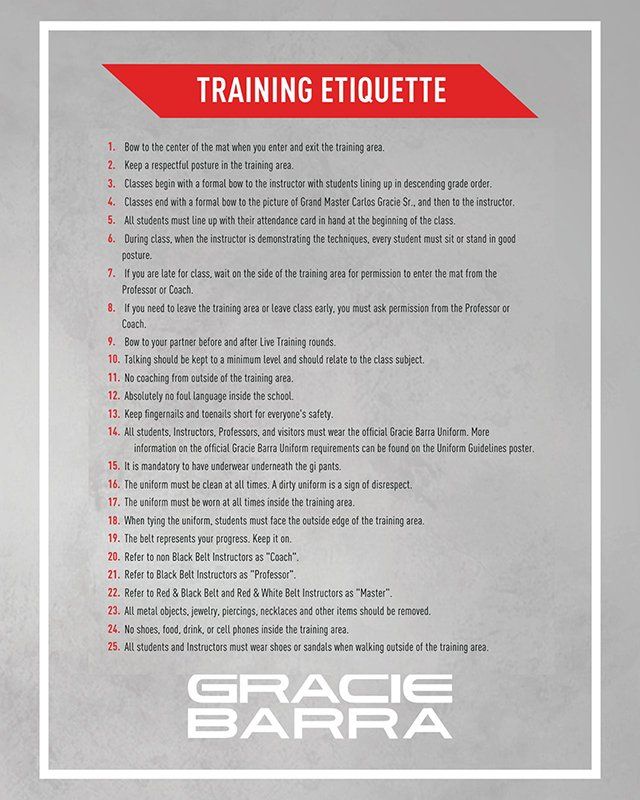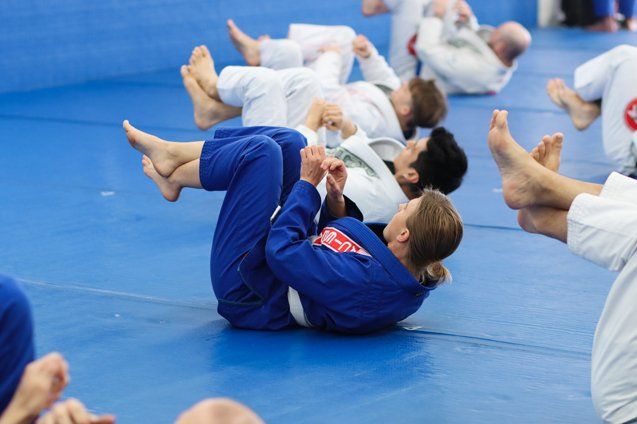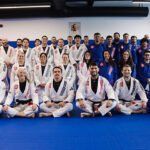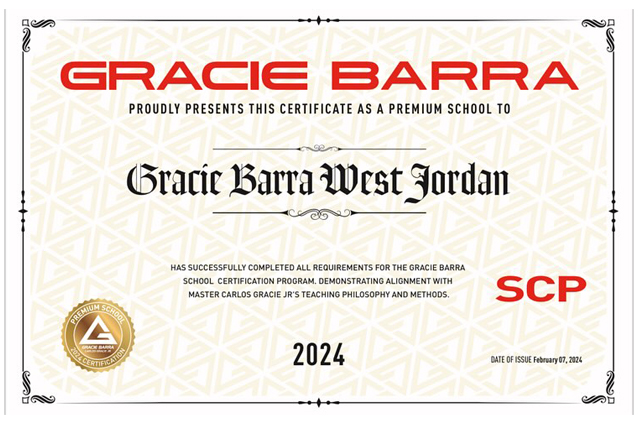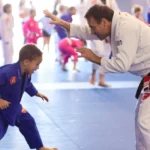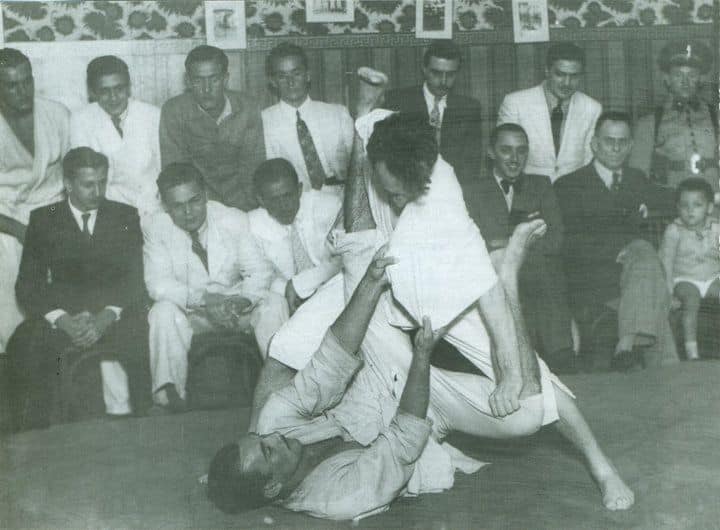This is the fifth article in the series BJJ Ultimate Guide: A Beginner’s Roadmap to Brazilian Jiu-Jitsu. Click to check other articles of this series.
Goal Setting and Progress Tracking in Jiu Jitsu for Beginners: Beyond the Belt
When it comes to Jiu Jitsu for beginners, it’s essential to set goals for your BJJ journey by focusing on personal growth and improvement rather than being solely driven by belt advancement. Establish both short-term and long-term goals that reflect your aspirations and challenges in the sport. Short-term goals may involve mastering a specific technique or enhancing your endurance, while long-term goals could include competing in a tournament or refining your overall skill set.
To effectively monitor your progress, maintain a training journal where you can document your training sessions, achievements, and areas for improvement. Regularly review your journal to track your advancements and identify areas where you can further develop. Remember that the belt you earn along the way should be seen as a consequence of your dedication, effort, and commitment to improvement, rather than the ultimate goal itself. By prioritizing personal growth and progress, you’ll find greater fulfillment and satisfaction in your BJJ journey, regardless of the color of your belt.
Mental Preparation and Mindfulness: Building Resilience in BJJ
In Brazilian Jiu-Jitsu (BJJ), mental toughness is just as crucial as physical conditioning. The sport will test your resilience, requiring a commitment stronger than frustration. Embrace mindfulness and mental visualization techniques to prepare yourself mentally for training sessions and competitions. Take time to visualize yourself executing techniques flawlessly and handling challenging situations with calmness and clarity.
Understand that mastery in BJJ is a gradual process, akin to building a structure brick by brick. It takes time, dedication, and patience to put all the pieces together and achieve proficiency. Even during sparring sessions, where the intensity is high and mistakes are inevitable, view the challenging moments as valuable learning opportunities. Embrace the discomfort and learn from your struggles, knowing that each setback brings you one step closer to improvement. By cultivating mental resilience and mindfulness, you’ll not only enhance your performance on the mats but also develop valuable life skills that extend beyond the realm of BJJ.
Furthermore, prioritize consistency in your training regimen, even when you may not feel motivated. Fight the urge to succumb to laziness and commit to showing up, putting in the work, and pushing through the tough moments. Often, it’s during these times of resistance that you experience the most growth and development.

Jiu Jitsu for Beginners: Physical Preparation
Regarding Jiu Jitsu for beginners, preparing your body for the demands of BJJ involves a multifaceted approach encompassing various aspects of physical fitness. Here are key components to consider in your physical preparation:
Finding Your Weight Class
Determining your optimal weight class is essential for competition and overall performance in BJJ. Consider factors such as your body type, strength-to-weight ratio, and personal preferences when selecting your weight class.
Developing Explosion
Explosive power is vital for executing quick and dynamic movements in BJJ. Incorporate plyometric exercises like box jumps, medicine ball throws, and explosive push-ups to develop explosive strength and agility.
Developing Strength
Strength training forms the foundations of physical preparation for BJJ. Focus on compound movements such as squats, deadlifts, and bench presses to build overall strength and muscular endurance. In addition to that, target specific muscle groups used in BJJ, such as the core, back, and grip muscles, with targeted exercises.
Developing Endurance
Endurance is crucial for sustaining performance throughout long training sessions and competitions. Incorporate cardiovascular exercises like running, cycling, or swimming into your training regimen to improve cardiovascular endurance and stamina.
Developing Mobility
Mobility is key for maintaining fluid movement and preventing injuries in BJJ. Incorporate mobility drills and dynamic stretching exercises into your warm-up routine to improve joint mobility and flexibility. Focus on areas commonly restricted in BJJ, such as the hips, shoulders, and spine.
Leveraging the Leverage in Jiu Jitsu for Beginners
BJJ is a sport that emphasizes technique and leverage over brute strength. Focus on refining your technique and learning how to leverage your body and leverage points effectively. Understand the principles of leverage and how to apply them strategically during grappling exchanges.
Side Exercises and Professional Guidance
While side exercises such as weightlifting, cardio, and mobility work are important components of physical preparation, remember that becoming proficient in BJJ ultimately comes from training BJJ itself, not solely from traditional gym workouts. A professional strength and conditioning coach can provide personalized guidance and programming tailored to your specific needs and goals, helping you optimize your physical preparation for BJJ. By integrating these elements into your training regimen, you’ll enhance your physical capabilities and performance on the mats, ultimately improving your overall BJJ experience.
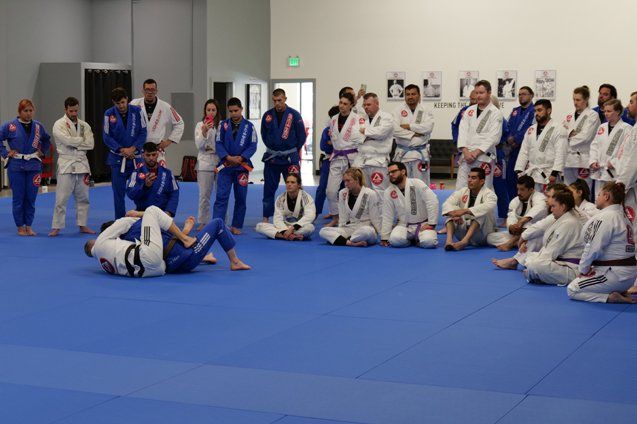
Understanding the Dunning-Kruger Effect in Brazilian Jiu-Jitsu: A Journey Through Belts
Brazilian Jiu-Jitsu (BJJ) is not just a martial art; it’s a psychological odyssey through self-discovery and humility. At the core of this journey lies the Dunning-Kruger effect—a psychological phenomenon discovered by psychologists David Dunning and Justin Kruger in the late 1990s. This phenomenon found its roots in an intriguing case: a failed bank robber who believed he could outsmart surveillance cameras by covering his face with lemon juice. As expected, this misguided belief resulted in all criminals being identified and arrested, leading Dunning and Kruger to explore the intricacies of incompetence and overconfidence.
The Dunning-Kruger Effect: From Bank Robbery to BJJ
In the context of Brazilian Jiu-Jitsu, the Dunning-Kruger effect manifests at every stage of the belt journey. At the outset, white belts epitomize the epitome of cluelessness and humility. They step onto the mats with no knowledge and no confidence, blissfully unaware of the challenges that lie ahead. They do not know BJJ and they are aware of this.
As practitioners progress to the blue belt, a pivotal moment occurs—a moment characterized by the perfect storm of little knowledge and high confidence. Here, the Dunning-Kruger effect rears its head with ferocity. Blue belts, buoyed by their newfound skills, may find themselves overestimating their abilities, believing they have mastered techniques far beyond their actual proficiency. However, this illusion is swiftly shattered when they realize they only scratched the surface, plunging them into a sea of frustration and self-doubt. It is at this juncture that many blue belts face the ultimate test—do they persevere through the storm, or do they succumb to the tumultuous waves of uncertainty?
Yet, as practitioners ascend through the ranks—from purple to brown to black—the learning curve becomes more linear. With each belt, they accumulate knowledge and experience, gradually bridging the gap between what they know and what they don’t know. While the Dunning-Kruger effect may still linger in the shadows, it loses its grip as practitioners gain a deeper understanding of their capabilities and limitations.
Overcoming the Dunning-Kruger Effect: Embracing Growth and Resilience
To conquer the Dunning-Kruger effect in Brazilian Jiu-Jitsu, practitioners must embrace growth and resilience. White belts must acknowledge their lack of knowledge and approach training with humility and curiosity. Blue belts, amidst the turbulence of overconfidence and self-doubt, must recognize that mastery is a journey, not a destination. By cultivating a growth mindset and a willingness to learn from setbacks, practitioners can navigate the complexities of the belt journey with grace and resilience. Listening and trusting your Professors have a huge role in this process.
So, the Dunning-Kruger effect serves as a poignant reminder that the path to mastery in Brazilian Jiu-Jitsu is fraught with challenges and self-discovery. As practitioners progress through the ranks, they must confront their limitations and embrace the journey with humility and resilience. By understanding the intricacies of incompetence and overconfidence, individuals can unlock the true potential of their BJJ journey, finding fulfillment and success on and off the mats.
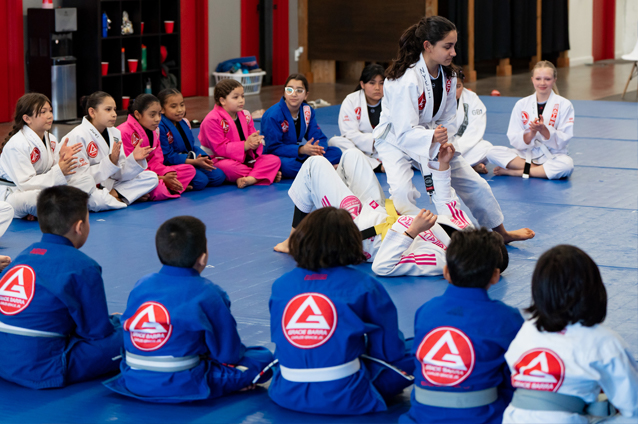
Navigating Your First BJJ Competition as a White Belt: Strategies for Success
Competing in Brazilian Jiu-Jitsu (BJJ) marks a significant milestone in any practitioner’s journey—a test of skill, resilience, and mental fortitude. As a white belt preparing for your inaugural competition, the journey is not just about physical readiness but also about mastering the mental game and understanding the fundamental principles of the sport. Here’s how you can effectively prepare and excel in your first BJJ competition:
1. Preparing for Your First Jiu Jitsu Competition
Competing in BJJ can evoke a mix of excitement and nervous anticipation. To prepare yourself, intensify your training sessions leading up to the competition, mimicking the intensity and pace you’ll encounter on the mat. Identify and capitalize on your strengths by developing a strategic game plan tailored to your style and capabilities.
2. Mastering the Mental Game of Competition
The mental aspect of competition is as vital as physical preparation. Combat pre-competition jitters by practicing breathing exercises and cultivating a positive mindset with affirmations. Visualize yourself in various match scenarios, mentally rehearsing your techniques and preparing to adapt to unforeseen challenges with composure and agility.
3. Embracing the Power of Repetition
In BJJ, repetition is paramount to mastery. Dedicate ample time to drilling the techniques you intend to deploy during the tournament, ingraining them into your muscle memory through consistent practice. Whether through partner drills, solo repetitions, or positional sparring, prioritize repetition to enhance your proficiency and confidence on the mat.
4. Understanding Core Jiu-Jitsu Concepts
Beyond individual techniques, delve into the foundational concepts that underpin BJJ. Concepts such as pressure, timing, and control transcend specific positions, empowering you to adapt and excel in diverse scenarios. By grasping these principles, you’ll cultivate a versatile and strategic approach to your matches.
5. Aligning Practice with Performance
Consistency between training and competition is key. Ensure that your tournament strategy aligns with your training regimen, translating the techniques and strategies honed in the gym seamlessly onto the competition mat.
6. Familiarize Yourself with the Rules
Knowledge of the rules is essential for navigating the competitive landscape of BJJ. Familiarize yourself with the regulations governing your division, ensuring compliance and avoiding penalties during matches.
7. Embrace the Experience
While the desire to win is natural, prioritize the journey over the outcome. Approach your first competition with a mindset of learning and growth, relishing the opportunity to test your skills and evolve as a practitioner. Regardless of the result, cherish the experience and use it as a springboard for future progress in your BJJ journey.
In essence, preparing for your first BJJ competition as a white belt is not just about physical readiness—it’s a holistic endeavor encompassing mental preparation, technical proficiency, and strategic acumen. By embracing the challenge with dedication, resilience, and a thirst for knowledge, you’ll not only excel in competition but also foster personal growth and fulfillment along the way.
Stay tuned for more great and useful information for your Brazilian Jiu Jitsu journey!
